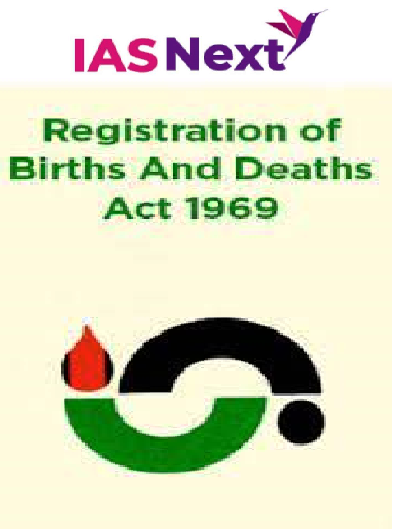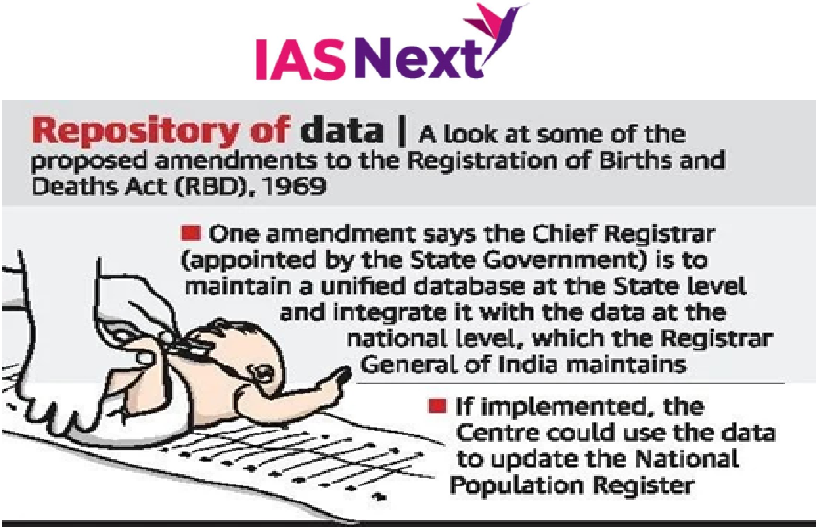CURRENT AFFAIRS
Get the most updated and recent current affair content on Padhaikaro.com
Amendments to the Registration of Births and Deaths Act, 1969
- IAS NEXT, Lucknow
- 29, Oct 2021

The Centre has proposed amendments to the Registration of Births and Deaths Act, 1969 that will enable it to “maintain the database of registered birth and deaths at the national level”.
- Presently, the registration of births and deaths is done by the local registrar appointed by States.

The database may be used to update the Population Register and the electoral register, and Aadhaar, ration card, passport and driving licence databases.
Proposed amendments by the Centre:
- It is proposed that the Chief Registrar (appointed by the States) would maintain a unified database at the State level and integrate it with the data at the “national level,” maintained by the Registrar General of India (RGI). The amendments will imply that the Centre will be a parallel repository of data.
- "Special Sub-Registrars" shall be appointed, in the event of disaster, with any or all of his powers and duties for on the spot registration of deaths and issuance of extract thereof, as may be prescribed.”
What are the benefits of registration of birth and death?
The birth certificate is the first right of the child and it is the first step towards establishing its identity. The following compulsory uses of birth and death certificates are emerged:
- For admission to schools.
- As proof of age for employment.
- For proof of age at marriage.
- To establish parentage.
- To establish age for purpose of enrollment in Electoral Rolls.
- To establish age for insurance purposes.
- For registering in National Population Register (NPR).
- Compulsory production of death certificate for the purpose of inheritance of property and for claiming dues from insurance companies and other companies.